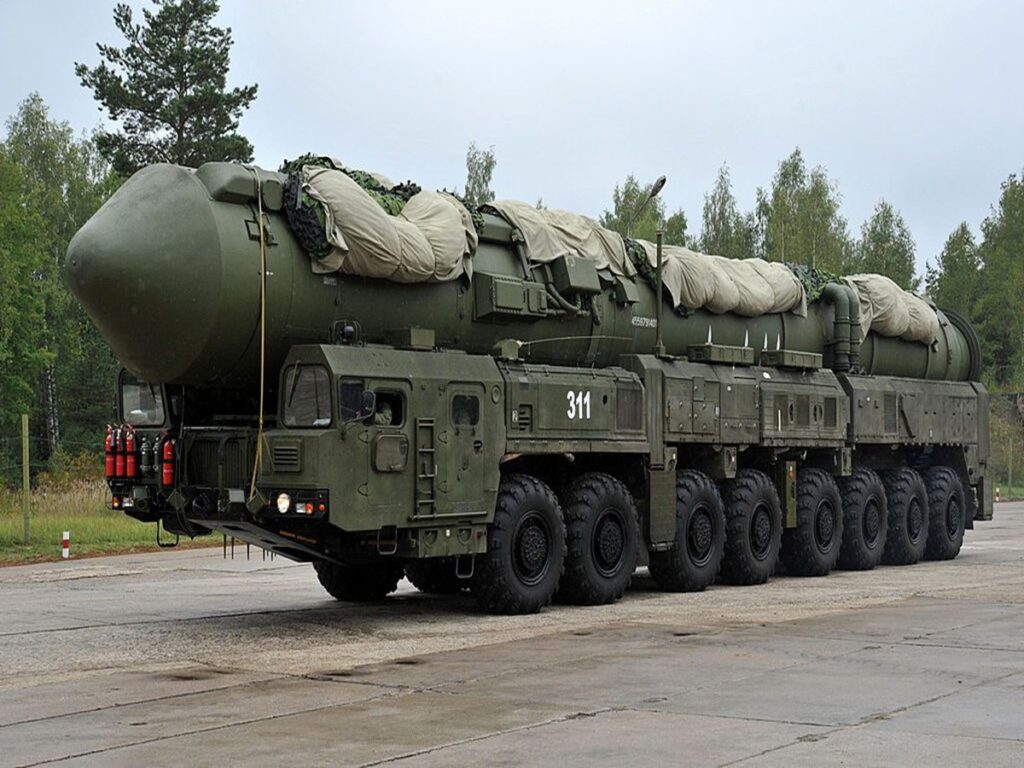Following Ukraine’s audacious drone attack on Russian air bases, a video of President Vladimir Putin threatening to use Oreshnik warheads—capable of reaching sun-like temperatures—has resurfaced, raising fears of escalation. India, meanwhile, draws lessons to bolster its own drone and air defense capabilities.
Moscow and New Delhi: A viral video of Russian President Vladimir Putin threatening to deploy Oreshnik hypersonic warheads, which he claims reach temperatures akin to the sun’s surface, has reignited global concerns after Ukraine’s massive drone strike on five Russian air bases. The attack, dubbed Operation Spider’s Web, destroyed over 40 strategic bombers, prompting Putin to warn of a “ruthless” retaliation that could extend beyond Ukraine to Western nations. In response, India is accelerating its adoption of advanced drone and air defense technologies, drawing lessons from Ukraine’s innovative tactics to prepare for future warfare.
Ukraine’s Drone Strike Shakes Russia
On June 1, 2025, Ukraine executed its largest-ever drone attack, targeting Russian air bases in Olenya, Murmansk, Irkutsk, Ivanovo, Ryazan, and Amur. The operation, codenamed Spider’s Web, destroyed 41 Russian aircraft, including Tu-95 and Tu-22 bombers and A-50 radar planes, valued at $7 billion, according to Ukraine’s Security Service (SBU). Ukrainian President Volodymyr Zelenskyy called it an “absolutely brilliant” operation, planned for over 18 months, using small, high-speed FPV (First Person View) drones smuggled into Russia inside trucks. Russian media labeled it “Russia’s Pearl Harbor,” with pro-Kremlin blogger Roman Alekhin urging a response as severe as the US retaliation after 1941. The attack exposed vulnerabilities in Russia’s air defenses, with drones launched near airfields evading detection due to their low cost, small size, and optical fiber-enhanced range of 18–20 km.
Putin’s Fiery Threat Resurfaces
A video, reportedly shared by Russia News on June 2, 2025, shows Putin warning of retaliation with Oreshnik hypersonic warheads, including the Avangard Hypersonic Glide Vehicle and Kinzhal missile, capable of speeds five times that of sound and temperatures up to 4,000°C—nearly the sun’s surface temperature of 5,500°C. Putin claims these warheads can reduce targets to ash, stating, “This is not just a military warning; it’s reality. We are now selecting targets.” While the video is said to be old, its resurfacing has amplified fears of escalation, with Putin hinting at strikes beyond Ukraine, potentially targeting NATO and the US for supporting Kyiv. He called Zelenskyy a “Western puppet” and vowed a “ruthless” response, accusing Ukraine of terrorist acts. Kremlin spokesman Dmitry Peskov emphasized that such moves by Western allies supplying Ukraine with long-range weapons are “dangerous” and counter to peace efforts.
Global Tensions and Nuclear Fears
Putin’s threat to use Oreshnik warheads, designed for nuclear or conventional payloads, has raised alarms about a potential World War III. Military experts warn that deploying such hypersonic missiles, which evade existing anti-missile defenses, could escalate the conflict dramatically. Zelenskyy condemned Russia’s ongoing attacks, noting that Russia launched 367 drones and missiles on Ukraine the same weekend, killing 12, including three children. He urged stronger sanctions, criticizing US and Western “silence” for encouraging Putin. UN and European leaders have called for restraint, with analysts suggesting Putin’s rhetoric is both a military threat and psychological warfare to deter Western support for Ukraine. John E. Herbst of the Atlantic Council noted that Ukraine’s strike strengthens its position in ceasefire talks, but Putin’s rejection of a US-proposed 30-day ceasefire indicates his intent to escalate.
India’s Strategic Response
Ukraine’s innovative use of FPV drones has prompted India to bolster its own capabilities. Retired Colonel Devesh Singh, a defense expert, praised the operation’s secrecy and planning, likening it to Israel’s pager attack. He noted that India inducted its first batch of five FPV drones in March 2024, with plans for 100 more, developed with Chandigarh’s Terminal Ballistics Research Laboratory (TBRL). These drones, equipped with anti-tank payloads, are designed for high-speed, low-cost strikes. Singh emphasized that Ukraine’s attack, which used optical fiber to extend drone range, highlights the future of warfare. India is now focusing on indigenous drone systems, counter-drone technology, and air defenses to achieve self-reliance, with Operation Sindoor marking a step toward advanced drone integration.
Lessons for Future Warfare
The Ukrainian operation showcased the power of low-cost, high-impact technology, with FPV drones costing a fraction of the multi-million-dollar aircraft they destroyed. Colonel Singh stated, “This attack is a glimpse of future wars, blending human intelligence, technology, and covert strategy.” India’s military is prioritizing rapid deployment of such systems to counter similar threats, especially in contested border regions. Globally, the strike has raised concerns about the vulnerability of military bases to drone swarms, prompting nations to reassess air defense strategies.


